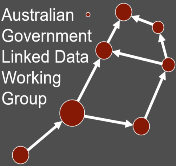Data Roles
The roles that Agents - People and Organisations - play in relation to data. This is an extended and Semantic Web version of the International Organisation for Standardization’s ISO19115-1 standard.
This vocabulary is intended to replace other versions of the ISO Role Codes such as https://data.idnau.org/pid/vocab/idn-role-codes and be a central place, at least for Australian Linked Data, for these widely-used codes.
